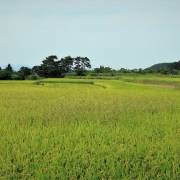What is the Saemaul Undong Movement?
Topic of Study [For H2 History Students]:
Paper 1: Understanding the Global Economy (1945-2000)
Section B: Essay Writing
Theme II Chapter 3: Rise of Asian Tigers from 1970s to 1990s [South Korea and Taiwan]
Historical context: Origins of the New Village Movement
The South Korean President Park Chung Hee launched the Saemaul Undong (New Village Movement) in April 1970. It was targeted at the rural parts of nation to advance economic development by combatting endemic rural poverty in the Republic. Although South Korea was already experiencing economic growth in the 1960s, the rural population did not gain much from this trend.
“Our industry,” [Park] solemnly declared, “can develop only when our farmers become well-to-do and the rural communities develop rapidly. Well-to-do farmers generate a great deal of purchasing power, providing one of the basic conditions for industrial development. When industries develop rapidly, the resources thus generated are made available… for reinvestment in the agricultural sector. Viewed in this way, agriculture and industry are inseparable.“
An excerpt from “The Park Chung Hee Era: The Transformation of South Korea” by Byung-Kook Kim and Ezra F. Vogel.
How does it work?
The Saemaul Undong is defined as a community development movement that promotes three main concepts: self-help, diligence and co-operation. The Park administration mobilised governments to equip farmers with the knowledge to modernise their homes and farms. Improvements in infrastructure was aimed to raise living standards. Also, farmers were encouraged to use high-yielding varieties to boost their rice production, thus ending food shortage.
To symbolize this change, all rural households had to replace their thatched roof with tiles, which were more fireproof and considered more modern, although the poor often had to settle for corrugated metal roofs painted blue or orange to look like tiles.
… Most important was the price support given to farm crops, especially rice. It meant higher food prices for urban workers, who often struggled on low wages, but it produced higher incomes for farmers and eventually reduced rural poverty.
An excerpt from “A Concise History of Korea: From Antiquity to the Present” by Michael J. Seth.
The movement was a resounding success in the mechanisation of farming techniques. With the increased use of motor vehicles, farm output increased significantly. Furthermore, the development of collective farm estates in the 1970s contributed to the production of specific agricultural items like citrus and oysters.
Some of the specialty agricultural items produced by these estates, including citrus, oyster, and mushrooms, were exported, with remarkable growth rates in exports of citrus (1,800%) and mushrooms (1,000%) during 1972–1976. Such impressive rates of growth boosted the total value of exports of agricultural products to $328 million in 1971, a 255% increase over 1967.
An excerpt from the “The Saemaul Undong Movement in the Republic of Korea” by the Asian Development Bank, 2012.
What can we learn from this article?
Consider the following question:
– Assess the view that industrialisation was the most important factor in explaining the ‘Miracle on the Han River’.
Join our JC History Tuition to learn more about the Asian Tigers. The H2 and H1 History Tuition feature online discussion and writing practices to enhance your knowledge application skills. Get useful study notes and clarify your doubts on the subject with the tutor. You can also follow our Telegram Channel to get useful updates.
We have other JC tuition classes, such as JC Math Tuition and JC Chemistry Tuition. For Secondary Tuition, we provide Secondary English Tuition, Secondary Math tuition, Secondary Chemistry Tuition, Social Studies Tuition, Geography, History Tuition and Secondary Economics Tuition. For Primary Tuition, we have Primary English, Math and Science Tuition. Call 9658 5789 to find out more.





